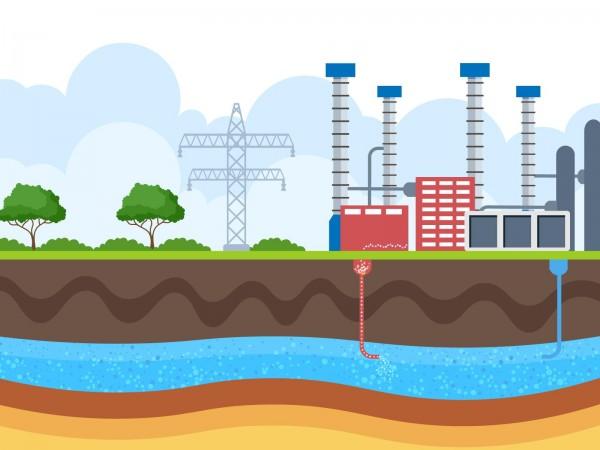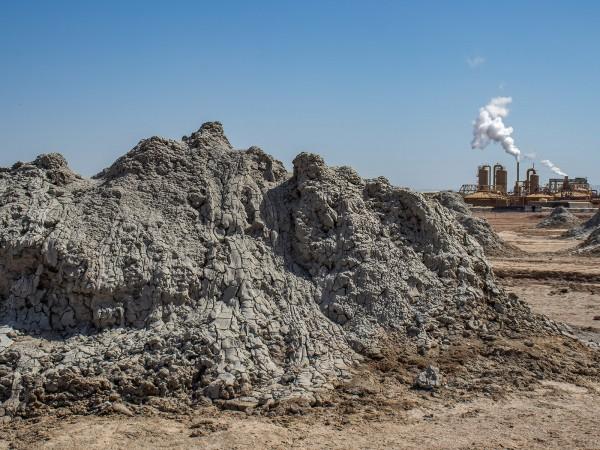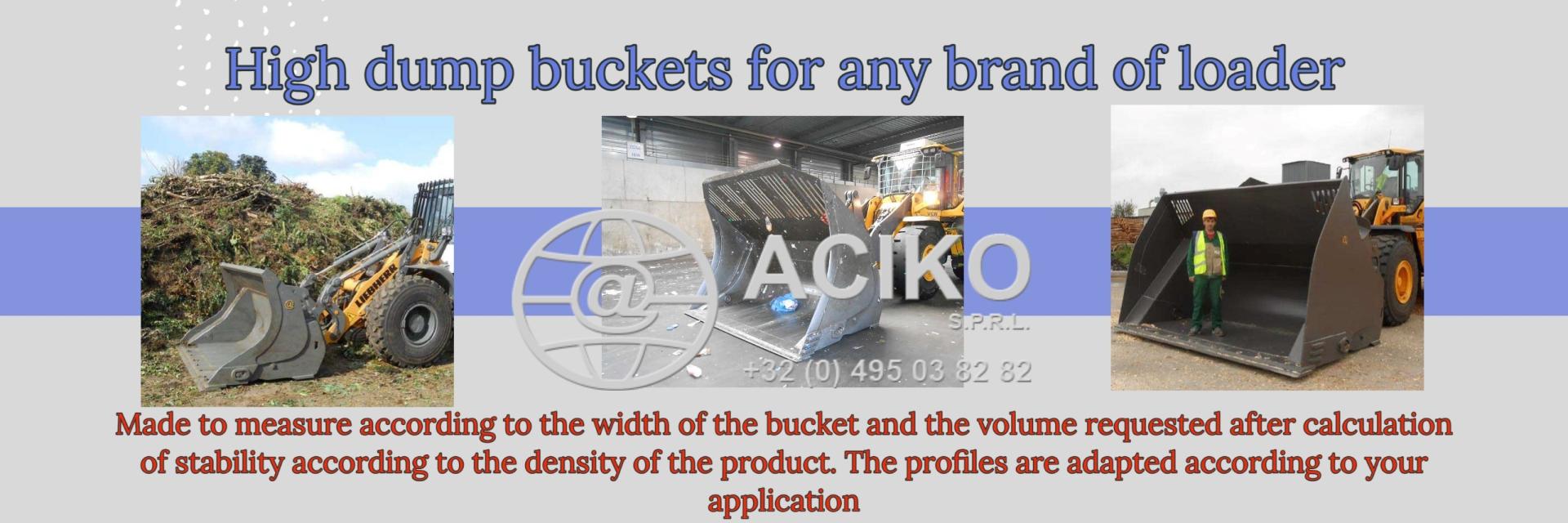Combining Lithium Extraction and Geothermal Energy for Renewable Energy
23/11/22-FR-English-NL-footer
Combiner l'extraction du lithium et la géothermie pour les énergies renouvelables
 Coupling lithium extraction with geothermal energy could provide clean energy and valuable minerals. Credit: Composite image by Melanie Hess-Robinson | Pacific Northwest National Laboratory
Coupling lithium extraction with geothermal energy could provide clean energy and valuable minerals. Credit: Composite image by Melanie Hess-Robinson | Pacific Northwest National Laboratory
Sous la croûte terrestre, la roche super chaude a le potentiel de fournir une énergie propre et renouvelable appelée énergie géothermique. Cette ressource ne demande qu'à être exploitée. Cependant, le développement de l'énergie géothermique au cours des deux dernières décennies a été entravé par des investissements initiaux importants, des risques financiers et un coût perçu plus élevé que les énergies renouvelables comme l'éolien et le solaire. Mais tout cela pourrait changer si l'énergie géothermique est associée à l'extraction du lithium.
Les recherches du Pacific Northwest National Laboratory (PNNL) montrent que le couplage de la production d'énergie géothermique avec l'extraction du lithium pourrait réduire considérablement le coût des développements géothermiques et augmenter la rentabilité des centrales. De plus, cela fournirait un moyen d'extraire des minéraux très demandés comme le lithium pour fabriquer des batteries, des véhicules électroniques, etc.
"Le développement géothermique stagne depuis 30 ans en raison de contraintes économiques et logistiques, mais le coupler à l'extraction du lithium pourrait rendre les usines plus rentables et plus rapides", a déclaré Dave Goodman, analyste de recherche au PNNL.
En se concentrant sur la mer de Salton, une zone avec un potentiel géothermique abondant et des réserves de lithium, l'équipe de recherche a examiné de près comment divers scénarios financiers, politiques et technologiques pourraient affecter le délai de rentabilité et les bénéfices projetés des centrales géothermiques dans la région. Des délais d'autorisation plus courts, des coûts de construction réduits et des subventions gouvernementales pourraient tous augmenter la viabilité géothermique, mais la colocalisation avec l'extraction de lithium s'est avérée avoir le plus grand potentiel pour réduire les obstacles et encourager le développement géothermique futur réussi.
Crédit : Image composite par Melanie Hess-Robinson | Pacific Northwest National Laboratory Le couplage de l'extraction du lithium avec l'énergie géothermique pourrait fournir une énergie propre et des minéraux précieux.
Le couplage de l'extraction du lithium avec l'énergie géothermique pourrait fournir une énergie propre et des minéraux précieux. Crédit : Image composite par Melanie Hess-Robinson | Laboratoire national du nord-ouest du Pacifique
Essorer l'eau et les métaux de la pierre
Dans la production d'énergie géothermique, l'eau - appelée saumure - est chauffée par des roches super chaudes en profondeur. Lorsque la saumure est déplacée vers la surface de la Terre, elle se refroidit rapidement, produisant de la vapeur qui fait tourner des turbines et génère de l'énergie. Ensuite, la saumure est renvoyée au sol, poursuivant le cycle. Les États-Unis possèdent la plus grande ressource géothermique connue au monde, avec un potentiel estimé pour fournir jusqu'à 10 % de la capacité électrique totale des États-Unis.
Mais les ressources géothermiques de la mer de Salton n'offrent pas seulement de l'énergie renouvelable : la saumure regorge de minéraux, y compris des métaux précieux comme le lithium, qui pourraient être extraits avec les bonnes technologies. La demande de lithium, un ingrédient clé des batteries, est déjà élevée et devrait grimper en flèche jusqu'à 40 fois d'ici 2040. Actuellement, très peu de lithium est produit aux États-Unis, qui importent la plupart du lithium d'Australie, du Chili et de Chine. La création d'un approvisionnement national durable en lithium a conduit les chercheurs et les développeurs à faire preuve de créativité pour savoir comment et où extraire plus de lithium. Une solution potentielle consiste à extraire le lithium de la saumure géothermique et un emplacement prometteur est la mer de Salton en Californie.
"Il y a beaucoup d'optimisme autour des futures technologies d'extraction du lithium", a expliqué Patrick Mirick, scientifique de la Terre au PNNL. "Nos recherches montrent que si ces technologies fonctionnent comme prévu, elles changeront la donne financière pour l'industrie géothermique."
Pour déterminer à quel point l'extraction de lithium colocalisée dans les centrales géothermiques pourrait potentiellement changer l'industrie, les chercheurs ont mené une analyse technico-économique pour projeter la rentabilité de l'usine au fil du temps dans la mer de Salton. En examinant différents échéanciers, options de financement et technologies, les chercheurs ont prévu que l'intégration de l'extraction du lithium entraînerait les impacts potentiels les plus importants pour les centrales géothermiques : réduire le coût de la production d'électricité, raccourcir le délai de rentabilité des centrales et augmenter les bénéfices nets - potentiellement beaucoup le temps est dépassé. De tels changements élimineraient d'importants obstacles au développement de l'industrie géothermique.
Donner un élan à la production nationale de lithium

A geothermal power plant in the Salton Sea, which has abundant geothermal and lithium resources. Credit: Photo by Cynthia Parris
En 2020, la California Energy Commission (CEC) a estimé que la roche souterraine de la région sud de la mer de Salton contenait de la saumure souterraine susceptible de répondre à 40 % de la demande mondiale de lithium et de générer plus de 7 milliards de dollars de revenus annuels. L'énorme potentiel de cette région pour produire de l'énergie propre et du lithium est si prometteur que la CEC a créé la Lithium Valley Commission pour étudier plus avant les opportunités dans ce domaine.
L'extraction du lithium - et potentiellement d'autres minéraux terrestres précieux - de la saumure géothermique évite bon nombre des préoccupations environnementales et sociales associées aux méthodes d'extraction du lithium actuelles. Étant donné que la saumure est déjà amenée à la surface pour soutenir le développement géothermique, les impacts supplémentaires de l'ajout de l'extraction de lithium à une centrale géothermique sont minimes et devraient avoir moins d'impacts environnementaux que l'extraction traditionnelle de roche dure tout en fournissant des minéraux essentiels pour un avenir énergétique propre. PNNL est un leader dans le développement de technologies d'extraction minérale qui pourraient être utilisées pour collecter du lithium et potentiellement d'autres minéraux de terres rares à partir de saumure géothermique. Développer une technologie d'extraction du lithium plus respectueuse de l'environnement serait une étape précieuse pour répondre à la demande croissante de lithium.
Crédit : Photo de Cynthia Parris | Shutterstock.com Une centrale géothermique dans la mer de Salton, qui possède d'abondantes ressources géothermiques et de lithium.
Une centrale géothermique dans la mer de Salton, qui possède d'abondantes ressources géothermiques et de lithium.
Les chercheurs du PNNL ont également étudié les stratégies que les développeurs de ressources, les régulateurs gouvernementaux et les décideurs politiques pourraient poursuivre pour améliorer la valeur des ressources géothermiques indépendamment de l'extraction du lithium. Par exemple, des approches contractuelles innovantes et un soutien à l'identification des ressources pourraient réduire les risques pour les développeurs, faisant de la géothermie une option d'investissement plus attrayante. Les incitations soutenant les systèmes géothermiques améliorés pourraient augmenter le nombre de sites aux États-Unis adaptés à la production d'énergie géothermique. Ces approches soutiendraient la croissance de cette source d'énergie renouvelable pour aider à répondre aux besoins en énergie de base du réseau électrique.
« Les énergies renouvelables comme l'éolien et le solaire pourraient fournir jusqu'à 90 % de nos besoins en énergie propre, mais au-delà, les rendements diminuent. La géothermie pourrait aider à combler l'écart pour atteindre 100 % d'énergie propre, car elle fournit un approvisionnement constant en énergie et un potentiel de flexibilité", a déclaré Dhruv Bhatnagar, ingénieur principal de recherche sur les systèmes énergétiques du PNNL.
Dans un rapport séparé, les chercheurs du PNNL ont découvert que la réduction des coûts de développement grâce à des incitations, la modernisation des options contractuelles et la valorisation des services de réseau fournis par les centrales géothermiques aideraient le développement géothermique à être compétitif et rentable en moins de temps. Une option pour réduire les risques et les coûts du développement géothermique consiste à adopter une approche basée sur le marché qui compense de manière appropriée les caractéristiques de l'énergie géothermique. Par exemple, valoriser la contribution de la capacité ferme de la géothermie en complément des énergies renouvelables à faible coût mais variables, comme l'éolien et le solaire, pourrait augmenter sa valeur marchande et conduire à un retour plus rapide sur les investissements des développeurs, stimulant la croissance de l'industrie.
"Trouver des moyens de rendre la géothermie plus compétitive sur le marché ouvrira des opportunités pour générer plus d'énergie propre à l'avenir", a expliqué Bhatnagar. "Cela comprend l'alignement des marchés et des politiques pour tirer parti de la valeur que la géothermie peut apporter au réseau."
Cette recherche a été financée par le ministère de l'Énergie, Bureau des technologies géothermiques.
NJC.© Info Pacific Northwest National Laboratory
------------------------------------------------------------------------------------------------------------------
23/11/22-English
Combining Lithium Extraction and Geothermal Energy for Renewable Energy
 Coupling lithium extraction with geothermal energy could provide clean energy and valuable minerals. Credit: Composite image by Melanie Hess-Robinson | Pacific Northwest National Laboratory
Coupling lithium extraction with geothermal energy could provide clean energy and valuable minerals. Credit: Composite image by Melanie Hess-Robinson | Pacific Northwest National Laboratory
Beneath the Earth’s crust, super-hot rock holds the potential to provide clean, renewable energy called geothermal energy. This resource is just waiting to be tapped. However, the development of geothermal energy over the past couple decades has been hampered by significant upfront investment, financial risk, and a perceived cost higher than renewables like wind and solar. But that could all change if geothermal energy is paired with lithium extraction.
Research from Pacific Northwest National Laboratory (PNNL) shows that coupling geothermal energy production with lithium extraction could substantially lower the cost of geothermal developments and boost plant profitability. Plus, it would provide a way to extract high-demand minerals like lithium to manufacture batteries, electronic vehicles, and more.
“Geothermal development has been stagnant for the last 30 years due to economic and logistic constraints but coupling it with lithium extraction could make plants more profitable, faster,” said Dave Goodman, PNNL research analyst.
Zeroing in on the Salton Sea—an area with abundant geothermal potential and lithium reserves—the research team took a close look at how various finance, policy, and technology scenarios could affect the time to profitability and projected profits of geothermal plants in the region. Shorter permitting timelines, reduced construction costs, and government subsidization could all increase geothermal viability, but co-location with lithium extraction was shown to have the greatest potential to lower barriers and encourage successful future geothermal development.
Credit: Composite image by Melanie Hess-Robinson | Pacific Northwest National Laboratory Coupling lithium extraction with geothermal energy could provide clean energy and valuable minerals.
Coupling lithium extraction with geothermal energy could provide clean energy and valuable minerals. Credit: Composite image by Melanie Hess-Robinson | Pacific Northwest National Laboratory
Wringing water—and metals—from stone
In geothermal energy production, water—called brine—is heated by super-hot rock deep underground. When the brine is moved to the Earth’s surface, it cools rapidly, producing steam that turns turbines and generates energy. Then, the brine is returned to the ground, continuing the cycle. The United States has the largest known geothermal resource in the world, with an estimated potential to provide up to 10 percent of the total U.S. electricity capacity.
But geothermal resources at the Salton Sea don’t just offer renewable energy—the brine is full of minerals, including valuable metals like lithium, that could be extracted with the right technologies. Demand for lithium—a key battery ingredient—is already high and expected to skyrocket up to 40 times by 2040. Currently, very little lithium is produced in the United States, which imports most lithium from Australia, Chile, and China. Creating a sustainable domestic supply of lithium has led researchers and developers to get creative about how and where to extract more lithium. One potential solution is to extract lithium from geothermal brine and a promising location is the Salton Sea in California.
“There’s a lot of optimism around future lithium extraction technologies,” explained Patrick Mirick, PNNL Earth scientist. “Our research shows that if these technologies work as planned, they’ll be a financial game changer for the geothermal industry.”
To determine just how much co-locating lithium extraction at geothermal power plants could potentially change the industry, researchers conducted a techno-economic analysis to project plant profitability over time in the Salton Sea. Looking at different timelines, financing options, and technologies, the researchers projected that incorporating lithium extraction would result in the biggest potential impacts for geothermal plants: decreasing the cost of electricity generation, shortening the time to plant profitability, and increasing net profits—potentially many times over. Such changes would remove significant barriers to development in the geothermal industry.
Building momentum for domestic lithium production

A geothermal power plant in the Salton Sea, which has abundant geothermal and lithium resources. Credit: Photo by Cynthia Parris
In 2020, the California Energy Commission (CEC) estimated that the subsurface rock in the southern Salton Sea region contained subsurface brine with the potential to supply 40 percent of the world’s lithium demand and generate over $7 billion U.S. dollars in annual revenue. The enormous potential of this region to produce clean energy and lithium is so promising that the CEC set up the Lithium Valley Commission to further investigate opportunities in this area.
Extracting lithium—and potentially other valuable earth minerals—from geothermal brine avoids many of the environmental and social concerns associated with current lithium extraction methods. Because the brine is already brought to the surface to support geothermal development, the additional impacts of adding lithium extraction to a geothermal plant are minimal and expected to have fewer environmental impacts than traditional hard rock mining while providing critical minerals for a clean energy future. PNNL is a leader in developing mineral extraction technologies that could be used to collect lithium and potentially other rare earth minerals from geothermal brine. Developing more environmentally friendly lithium extraction technology would be a valuable step in meeting the growing demand for lithium.
Credit: Photo by Cynthia Parris | Shutterstock.com A geothermal power plant in the Salton Sea, which has abundant geothermal and lithium resources.
A geothermal power plant in the Salton Sea, which has abundant geothermal and lithium resources.
PNNL researchers have also studied strategies that resource developers, government regulators, and policymakers could pursue to improve the value of geothermal resources independent of lithium extraction. For example, innovative contracting approaches and support for resource identification could lower risks for developers, making geothermal a more attractive investment option. Incentives supporting enhanced geothermal systems could increase the number of sites in the U.S. suitable for geothermal energy production. These approaches would support the growth of this renewable energy source to help meet baseload power needs for the electrical grid.
“Renewables like wind and solar could provide up to 90 percent of our clean energy needs, but beyond that, there are diminishing returns. Geothermal could help close the gap to achieve 100 percent clean energy because it provides a consistent supply of power and the potential for flexibility,” said Dhruv Bhatnagar, PNNL senior energy systems research engineer.
In a separate report, PNNL researchers found that reducing development costs through incentives, modernizing contracting options, and valuing the grid services provided by geothermal plants would help geothermal development to be competitive and profitable in less time. One option for lowering the risks and costs of geothermal development is through a market-based approach that appropriately compensates for the characteristics of geothermal energy. For example, valuing geothermal’s firm capacity contribution in complementing low-cost but variable renewables, like wind and solar, could increase its market value and lead to a quicker return on developer investments, spurring industry growth.
“Finding ways to make geothermal more competitive on the market will open up opportunities to generate more clean energy in the future,” explained Bhatnagar. “This includes aligning markets and policies to leverage the value that geothermal can provide to the grid.”
This research was supported by the Department of Energy, Geothermal Technologies Office.
NJC.© Info Pacific Northwest National Laboratory
----------------------------------------------------------------------------------------------------------------------
23/11/22-NL
Combinatie van lithiumwinning en geothermische energie voor hernieuwbare energie
 Coupling lithium extraction with geothermal energy could provide clean energy and valuable minerals. Credit: Composite image by Melanie Hess-Robinson | Pacific Northwest National Laboratory
Coupling lithium extraction with geothermal energy could provide clean energy and valuable minerals. Credit: Composite image by Melanie Hess-Robinson | Pacific Northwest National Laboratory
Onder de aardkorst heeft superhete rots het potentieel om schone, hernieuwbare energie te leveren, geothermische energie genaamd. Deze bron wacht gewoon om te worden afgetapt. De ontwikkeling van geothermische energie in de afgelopen paar decennia werd echter belemmerd door aanzienlijke investeringen vooraf, financiële risico's en vermeende kosten die hoger waren dan die van hernieuwbare energiebronnen zoals wind en zon. Maar dat zou allemaal kunnen veranderen als geothermische energie wordt gecombineerd met lithiumwinning.
Onderzoek van het Pacific Northwest National Laboratory (PNNL) toont aan dat het koppelen van de productie van geothermische energie aan de winning van lithium de kosten van geothermische ontwikkelingen aanzienlijk kan verlagen en de winstgevendheid van de fabriek kan vergroten. Bovendien zou het een manier zijn om veelgevraagde mineralen zoals lithium te extraheren om batterijen, elektronische voertuigen en meer te maken.
"Geothermische ontwikkeling is de afgelopen 30 jaar gestagneerd vanwege economische en logistieke beperkingen, maar door dit te koppelen aan lithiumextractie kunnen planten sneller en winstgevender worden", zegt Dave Goodman, onderzoeksanalist bij PNNL.
Het onderzoeksteam richtte zich op de Salton Sea - een gebied met een overvloedig geothermisch potentieel en lithiumreserves - en onderzocht hoe verschillende financiële, beleids- en technologiescenario's de tijd tot winstgevendheid en de verwachte winst van geothermische centrales in de regio zouden kunnen beïnvloeden. Kortere vergunningstermijnen, lagere bouwkosten en overheidssubsidies zouden allemaal de geothermische levensvatbaarheid kunnen vergroten, maar co-locatie met lithiumwinning bleek het grootste potentieel te hebben om barrières te verlagen en een succesvolle toekomstige geothermische ontwikkeling aan te moedigen.
Krediet: samengestelde afbeelding door Melanie Hess-Robinson | Pacific Northwest National Laboratory Koppeling van lithiumwinning aan geothermische energie kan schone energie en waardevolle mineralen opleveren.
Het koppelen van lithiumwinning aan geothermische energie kan schone energie en waardevolle mineralen opleveren. Krediet: samengestelde afbeelding door Melanie Hess-Robinson | Pacific Northwest Nationaal Laboratorium
Water - en metalen - uit steen wringen
Bij de productie van geothermische energie wordt water, pekel genaamd, verwarmd door superhete rotsen diep onder de grond. Wanneer de pekel naar het aardoppervlak wordt verplaatst, koelt het snel af, waarbij stoom wordt geproduceerd die turbines laat draaien en energie opwekt. Vervolgens wordt de pekel teruggevoerd naar de grond, waardoor de cyclus wordt voortgezet. De Verenigde Staten hebben de grootste bekende geothermische bron ter wereld, met een geschat potentieel om tot 10 procent van de totale Amerikaanse elektriciteitscapaciteit te leveren.
Maar geothermische bronnen in de Salton Sea bieden niet alleen hernieuwbare energie: de pekel zit vol met mineralen, waaronder waardevolle metalen zoals lithium, die met de juiste technologieën kunnen worden gewonnen. De vraag naar lithium, een belangrijk batterij-ingrediënt, is al hoog en zal naar verwachting tegen 2040 tot 40 keer omhoogschieten. Momenteel wordt er heel weinig lithium geproduceerd in de Verenigde Staten, die het meeste lithium uit Australië, Chili en China importeren. Het creëren van een duurzame binnenlandse voorraad lithium heeft ertoe geleid dat onderzoekers en ontwikkelaars creatief zijn geworden over hoe en waar ze meer lithium kunnen winnen. Een mogelijke oplossing is het winnen van lithium uit geothermische pekel en een veelbelovende locatie is de Salton Sea in Californië.
"Er is veel optimisme rond toekomstige technologieën voor de winning van lithium", legt Patrick Mirick, aardwetenschapper van PNNL, uit. "Ons onderzoek toont aan dat als deze technologieën werken zoals gepland, ze een financiële game changer zullen zijn voor de geothermische industrie."
Om te bepalen hoeveel co-locatie lithiumwinning bij geothermische energiecentrales de industrie mogelijk zou kunnen veranderen, voerden onderzoekers een techno-economische analyse uit om de winstgevendheid van fabrieken in de Salton Sea in de loop van de tijd te projecteren. Kijkend naar verschillende tijdlijnen, financieringsopties en technologieën, voorspelden de onderzoekers dat de integratie van lithiumextractie zou resulteren in de grootste potentiële gevolgen voor geothermische centrales: verlaging van de kosten van elektriciteitsopwekking, verkorting van de tijd om winstgevend te worden en verhoging van de nettowinst - mogelijk veel keer voorbij. Dergelijke veranderingen zouden belangrijke belemmeringen voor ontwikkeling in de geothermische industrie wegnemen.
Momentum opbouwen voor de binnenlandse lithiumproductie

A geothermal power plant in the Salton Sea, which has abundant geothermal and lithium resources. Credit: Photo by Cynthia Parris
In 2020 schatte de California Energy Commission (CEC) dat de ondergrondse rots in de zuidelijke Salton Sea-regio ondergrondse pekel bevatte met het potentieel om 40 procent van de wereldwijde vraag naar lithium te leveren en meer dan $ 7 miljard aan jaarlijkse inkomsten te genereren. Het enorme potentieel van deze regio om schone energie en lithium te produceren is zo veelbelovend dat de CEC de Lithium Valley Commission heeft opgericht om de mogelijkheden op dit gebied verder te onderzoeken.
Door lithium - en mogelijk andere waardevolle aardmineralen - uit geothermische pekel te halen, worden veel van de milieu- en sociale problemen vermeden die gepaard gaan met de huidige methoden voor lithiumextractie. Omdat de pekel al naar de oppervlakte wordt gebracht om geothermische ontwikkeling te ondersteunen, zijn de extra effecten van het toevoegen van lithiumextractie aan een geothermische installatie minimaal en zullen ze naar verwachting minder milieueffecten hebben dan traditionele mijnbouw van hard gesteente, terwijl het essentiële mineralen levert voor een toekomst met schone energie. PNNL is een leider in de ontwikkeling van technologieën voor de winning van mineralen die kunnen worden gebruikt om lithium en mogelijk andere zeldzame aardmetalen te verzamelen uit geothermische pekel. Het ontwikkelen van een milieuvriendelijkere technologie voor lithiumextractie zou een waardevolle stap zijn om aan de groeiende vraag naar lithium te voldoen.
Krediet: Foto door Cynthia Parris | Shutterstock.com Een geothermische energiecentrale in de Salton Sea, die overvloedige geothermische en lithiumbronnen heeft.
Een geothermische energiecentrale in de Salton Sea, die overvloedige geothermische en lithiumbronnen heeft.
PNNL-onderzoekers hebben ook strategieën bestudeerd die ontwikkelaars van hulpbronnen, regelgevers van de overheid en beleidsmakers zouden kunnen nastreven om de waarde van geothermische hulpbronnen te verbeteren, onafhankelijk van lithiumwinning. Innovatieve benaderingen van contracten en ondersteuning voor het identificeren van hulpbronnen kunnen bijvoorbeeld de risico's voor ontwikkelaars verlagen, waardoor geothermie een aantrekkelijkere investeringsoptie wordt. Stimulansen ter ondersteuning van verbeterde geothermische systemen kunnen het aantal locaties in de VS dat geschikt is voor de productie van geothermische energie vergroten. Deze benaderingen zouden de groei van deze hernieuwbare energiebron ondersteunen om te helpen voldoen aan de basislaststroombehoeften van het elektriciteitsnet.
“Hernieuwbare energiebronnen zoals wind en zon kunnen tot 90 procent van onze behoefte aan schone energie voorzien, maar daarbuiten zijn er afnemende opbrengsten. Geothermie zou kunnen helpen de kloof te dichten om 100 procent schone energie te bereiken, omdat het een consistente stroomvoorziening en het potentieel voor flexibiliteit biedt, "zei Dhruv Bhatnagar, senior onderzoeksingenieur energiesystemen bij PNNL.
In een apart rapport ontdekten PNNL-onderzoekers dat het verlagen van de ontwikkelingskosten door middel van stimulansen, het moderniseren van contractopties en het waarderen van de netwerkdiensten die door geothermische centrales worden geleverd, zou helpen om geothermische ontwikkeling in minder tijd concurrerend en winstgevend te maken. Een mogelijkheid om de risico's en kosten van geothermische ontwikkeling te verlagen, is door middel van een marktgebaseerde benadering die de kenmerken van geothermische energie op passende wijze compenseert. Het waarderen van de capaciteitsbijdrage van geothermie als aanvulling op goedkope maar variabele hernieuwbare energiebronnen, zoals wind en zon, kan bijvoorbeeld de marktwaarde ervan verhogen en leiden tot een sneller rendement op investeringen van ontwikkelaars, wat de groei van de industrie stimuleert.
"Het vinden van manieren om geothermie competitiever op de markt te maken, zal kansen openen om in de toekomst meer schone energie op te wekken", legt Bhatnagar uit. "Dit omvat het afstemmen van markten en beleid om de waarde te benutten die geothermie kan bieden aan het net."
Dit onderzoek werd ondersteund door het Department of Energy, Geothermal Technologies Office.
NJC.© Info Pacific Northwest National Laboratory
-------------------------------------------------------------------------------------------------------------------
















